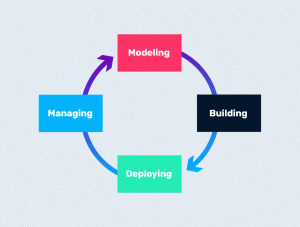July 2009 - Joseph Reynolds
 As a software engineer, project proposals are available in spades. Learning how to evaluate business needs and technical needs is a basic job prerequisite (Parkinson, 2000). Parkinson explains that there is a significant difference between a technical requirement and a business requirement. An example of a technical requirement would be needing a new printer. A similar business process requirement would be needing a more efficient printing algorithm that cuts down the time spent spooling a project to the printers.Business drivers can be broken down into “chunks”. For instance, an “Expense Reduction” driver may be broken into Customer Service expenses, customer acquisition\retention, efficiency, and other expenses (Machavarapu, 2006). Once the drivers are broken down, Machavarapu recommends assigning weights to the “chunks”, such that new projects can be evaluated for priority.
As a software engineer, project proposals are available in spades. Learning how to evaluate business needs and technical needs is a basic job prerequisite (Parkinson, 2000). Parkinson explains that there is a significant difference between a technical requirement and a business requirement. An example of a technical requirement would be needing a new printer. A similar business process requirement would be needing a more efficient printing algorithm that cuts down the time spent spooling a project to the printers.Business drivers can be broken down into “chunks”. For instance, an “Expense Reduction” driver may be broken into Customer Service expenses, customer acquisition\retention, efficiency, and other expenses (Machavarapu, 2006). Once the drivers are broken down, Machavarapu recommends assigning weights to the “chunks”, such that new projects can be evaluated for priority.
Finally, there is an array of reasons for beginning an IT project which should serve as red flags for engineers and developers. Reasons such as “Wanting to stay abreast of the latest technology advances” frequently translate into “Spend money on shiny new buttons”. Unfortunately, if this desire to advance technology isn’t tempered by legitimate business needs, the project may fail, or worse, prevent legitimate projects from receiving adequate funding.

References
Bernard, A. (December 26, 2003). Why Implementations Fail: The Human Factor.
Boehm, B. W. Quantitative Evaluation of Software Quality. In R. W. Selby, Ed. Software Engineering (p. 27). IEEE. Retrieved July 11, 2009, from Google Books.
Machavarapu, S. (2006). Prioritizing IT Projects Based on Business Strategy - CIO.com. Retrieved July 15, 2009, from http://www.cio.com/article/22976/Prioritizing_IT_Projects_Based_on_Business_S trategy/1
Parkinson, D. (2000). Recognizing business needs can lead to new and repeat clients. Retrieved
July 15, 2009, from http://articles.techrepublic.com.com/5 100-10878_11-5027153.html
Pfleeger, S. L. & Atlee, J. M. (2006). Why Software Engineering. Software Engineering Theory and Practice (3rd ed. pp. 9-11). Upper Saddle River, NJ: Pearson Prentice Hall.